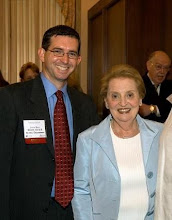Two millennia. For nearly two thousand years, Jews were personae non gratae in the Catholic world, vilified and demonized as the killers of Christ. In the Jewish ghetto in Rome (what’s left of it), there’s a painting on a church directly across from the Great Synagogue that essentially calls out the entire Jewish people for “making a very poor collective choice.”
Even prior to the establishment of Catholicism as a great religion and the faith of local designation, Romans took great pleasure in torturing the Jewish people. The Arch of Titus, which greets tourists as they enter the great Roman Forum, was built in 82 AD to commemorate the sacking of the Second Temple in 70 AD, and was used in later years by the Pope as the choice location to force Jews to submit to the authority of the Church.
All of that began to change, however, in 1965, with the meeting of the Second Vatican Council in Rome. From that meeting emerged the Nostra Aetate, a document that effectively absolved the Jewish people of the death of Jesus. This was followed shortly thereafter by the establishment of the internal International Catholic-Jewish Liaison Committee in 1971. And those efforts toward reconciliation have continued since, culminating last week in an amazing journey of 20 American Reform Cantors to Rome.
The Catholic Church is a massive, almost byzantine (forgive the pun) institution; perhaps the largest bureaucracy on the planet, with more than a billion adherents around the world. The Vatican is a self-contained city-state, a sovereign nation with defined borders and immense wealth. Rome is a 3,000 year-old city that was the seat of political and religious power for the better part of 2,000 years, and gave us what is today the model of our American “republic.”
In the face of this daunting history and power, 40 Jews from across the United States – clergy and congregants, staff and spouses – boarded planes last week with the goal of continuing the dialogue between the oldest of the Abrahamic faiths. The instrument of their design was a concert; the uplifting of voices and of spirit, with a call for greater understanding between Jew and Catholic. The mission was idealistic, the challenge enormous, and the expectations high.
The concert certainly did not disappoint. Each of the musicians assembled were at the top of their form, and the music was truly beautiful. Nearly 100 people were in attendance, and the setting – the Basilica of Santa Maria degli Angeli e dei Martiri, designed by Michaelangelo – reminded those of us there of how truly inspiring the occasion was.
Unfortunately, for a variety of reasons, the Pope himself was unable to participate in any of the events. I imagine these things happen in a bureaucracy as large as the Catholic Church. But his absence in no way detracts from the larger mission or what these cantors accomplished. The relationship between Jews and Catholics has a long, sordid history, and the fact that after nearly two thousand years sincere efforts to reconcile these two faiths are happening is a remarkable occurrence.
If the saying “Rome wasn’t built in a day” is true, then it must be doubly true that the rift between the Jewish and Catholic peoples will be healed over the course of time as well. And for those 20 cantors who gave their time, energy, and spirit in order to continue the process of reconciliation, one can only hope that they view their trip and their efforts as one very positive step in bringing our two faiths closer together. And for their work, we all should be thankful.
Baby steps...
13 years ago




No comments:
Post a Comment